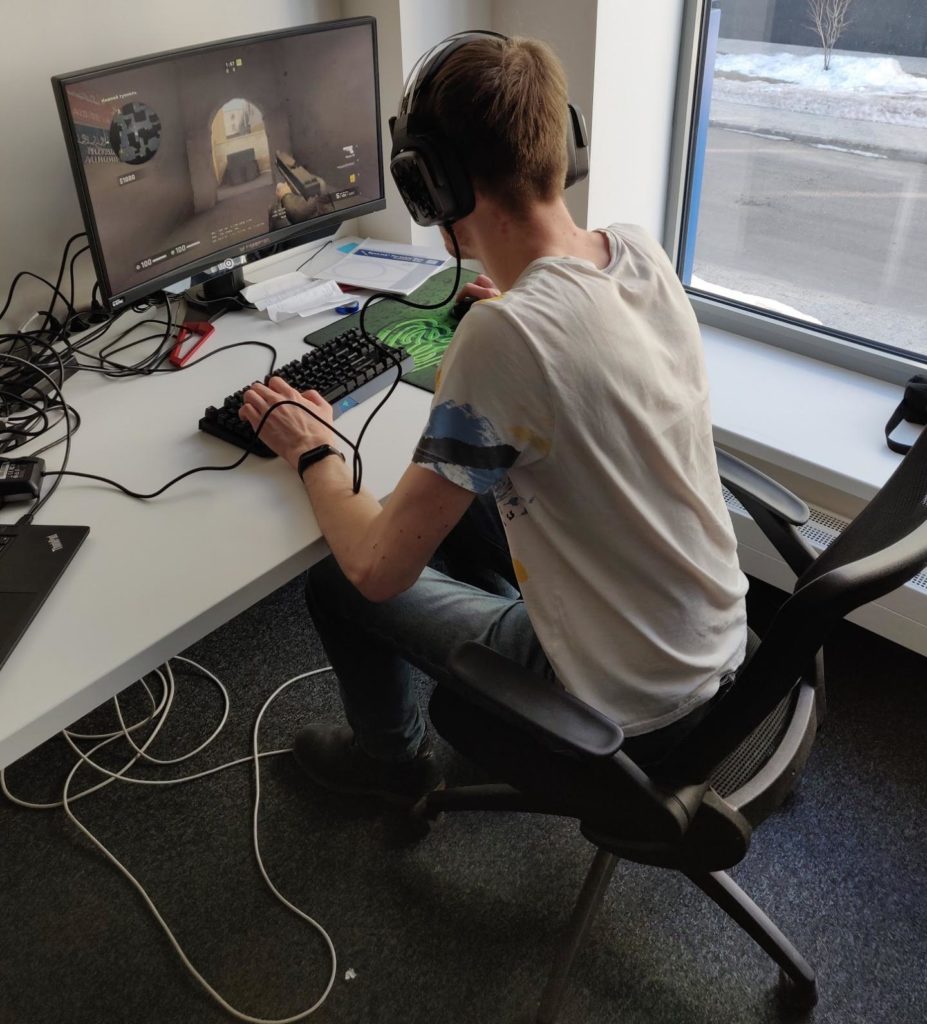A group of scientists from Skoltech, the Moscow Institute of Physics and Technology, and the State University of Aerospace Instrumentation in St. Petersburg has won the Best Paper Award at the prestigious fifth IEEE International Conference on Internet of People (IoP 2019) for research on artificial intelligence, which established a connection between an esports player’s movements and skill level. The research findings show that machine learning methods can accurately predict a player’s skill level in 77% of cases.
In just a few years, esports have evolved from video games for schoolkids to a full-fledged industry with professional teams, coaches, and huge investments. Like in any other sport, an esports player can be a professional or an amateur, and telling one from the other is essential for optimizing the training process.
Master’s students from the three Russian universities, led by Skoltech professors Andrey Somov and Evgeny Burnaev, looked for a connection between the gaming proficiency and body movements of an esports player seated in a chair.
“We hypothesized that there could be a link between a player’s body movements and skill level. Also, it was interesting to look at the players’ responses to various game events, such as kills, deaths, or shootings. We suspected that professional players and beginners would react differently to the same event,” explains the study’s first author Anton Smerdov, a graduate student at Skoltech and MIPT.
The experiment involved a total of 19 players, including nine professionals and 10 amateurs, who were asked to play Counter-Strike: Global Offensive (CS:GO) for 30 to 60 minutes. Their skill level was approximated as hours spent playing, similarly to how flight hours reflect pilot experience. The data were collected using an accelerometer and a gyroscope embedded in a chair.
“We then cut the data into three-minute sessions, assuming three minutes to be enough for understanding a player’s behavior and obtaining a sample large enough for algorithm learning,” Smerdov added.
The patterns extracted from each session were used to evaluate the players’ behavior and check how intensively and how often they moved or turned around along each of the three axes, or leaned back in the chair. A total of 31 patterns were obtained for each player, and eight most important features were defined using statistical techniques. Machine learning methods were then applied to the key features. The popular random forest method displayed the best performance, correctly determining a player’s skill level from a three-minute session 77% of the time. Also, the results showed that professional players move around more often and more intensively than beginners, while sitting perfectly still during shootouts and other game events.
The team led by professors Somov and Burnaev has been studying esports players’ psycho-emotional state and physical responses to the game using sensors and machine learning methods since 2018. The data collected and analyzed include heart rate, skin resistance, gaze direction, hand movements, environmental data (temperature, humidity, carbon dioxide levels), game telemetry, and other parameters.
###
This part of information is sourced from https://www.eurekalert.org/pub_releases/2019-09/miop-pea091319.php
Varvara Bogomolova
916-147-4496
[email protected]
https://mipt.ru/english/


